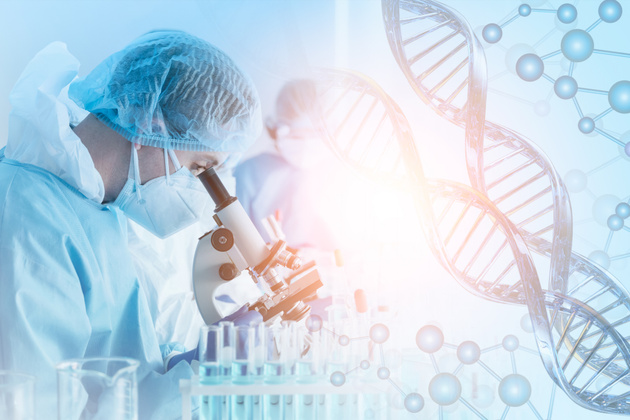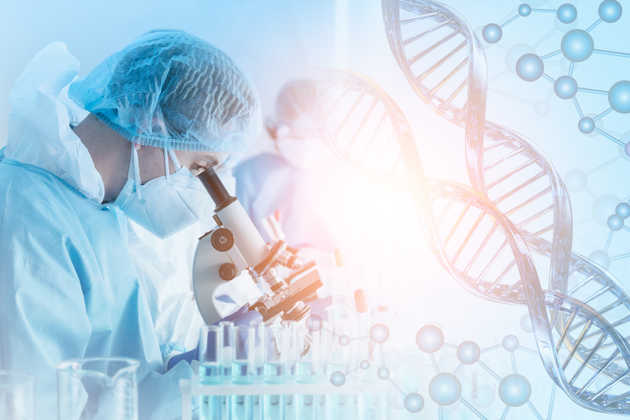What is Stem Cell Therapy and is it treated?
treatments are sought. It is aimed that the treatment applied does not harm the person or causes less harm than the disease. Alternative methods are sought, especially for diseases that cannot be treated with medication or whose treatment options cause too much harm to the person. It is aimed to use people’s own cells or the cells closest to them to cure diseases that require difficult treatment, such as leukemia. This process is called stem cell therapy and it is aimed to repair the person’s damaged cells with new cells. You can read the rest of our article to learn more about stem cell treatment.

What is Stem Cell?
Every cell in the human body has a function. Thanks to these functions, people continue to live, but other cells are needed to produce these cells. is heard. These cells from which cells are produced are called stem cells. Stem cells divide to produce daughter cells. The resulting daughter cells can turn into new stem cells or special cells that provide various functions of the body. The locations and functions of stem cells in the body are as follows:
- Stem cells in the brain work to produce new neurons.
- Stem cells in the bone marrow work to make new blood cells.
- Stem cells in the muscles take action to repair when there is damage to the muscle tissue.
- Stem cells in the skin renew hair follicles and help repair damaged skin tissue.
Stem cells provide the opportunity for treatment for many diseases, thanks to their ability to transform into the necessary cells when needed. Benefits that stem cells can provide include:
- More information about diseases can be obtained by examining the transformation of stem cells into different tissues and organs.
- They can be directed to repair damaged cells in the human body.
- Medicines produced for humans can be tested on some stem cells before being used in humans.
Adult Stem Cells
The human body contains stem cells throughout life. Adult stem cells begin to exist in the human body starting from the embryo and can be used whenever needed. These stem cells are found in small amounts in tissues such as bone marrow and fat.
Embryonic Stem Cells
Embryonic stem cells consist of a ball of cells formed 3-5 days after the egg is fertilized. These stem cells are more successful in differentiation than adult stem cells. They can differentiate into more cell types.
Hematopoietic Stem Cells
These blood stem cells are stem cells used to renew blood cells that die during chemotherapy, especially in people treated for leukemia. Stem cells taken from the patient before chemotherapy are injected back into the patient after chemotherapy.
Mesenchymal Stem Cells
Mesenchymal stem cells are stem cells found in every organ in the body. Their primary duty is to repair the body by turning into cells that form bone, fat and connective tissue. Research is being conducted on it, especially for the treatment of orthopedic diseases and autoimmune disorders.
How is Stem Cell Treatment Applied?
Stem cell therapy is the process of using stem cells to treat a disease. The method used in stem cell treatment is bone marrow transplantation or hematopoietic stem cell transplantation, which is the transplantation of cells taken from umbilical cord blood. For stem cell transplantation, a person whose cells are healthy and compatible with the sick person is needed. Generally, tissues are found to be similar to one of the family members. Healthy stem cells taken from this person are transferred to the person by allogeneic transplantation. For stem cell transplantation, the person’s health condition must first be evaluated. Afterwards, the cells to be used for transplantation must be taken from the donor. To remove the cells, a needle is inserted into the bone marrow or they are obtained from the fat tissue by liposuction. After the cells are received from the donor, they must be concentrated. The harvested cells are appropriately multiplied and made suitable for injection. Before the cells are transplanted, the person is given chemotherapy or radiotherapy to prepare the body for transplantation. The stem cells taken from the donor are transplanted into the prepared body and are expected to start showing their effects within a few weeks.
Which Diseases Is Stem Cell Treatment Good For?
While stem cell therapy helps cure some diseases, it also helps prolong life in some diseases. Stem cell therapy may be used in cases where the body cannot produce enough blood cells, the bone marrow or blood cells become diseased, or the stem cells die. Stem cell therapy can be used for some types of cancer as well as non-cancerous diseases. Diseases for which stem cell therapy can be used are:
- Leukemia
- thalassemia
- sickle cell anemia
- Hodgkin lymphoma
- multiple myeloma
- testicular cancer
- bone marrow failure
- Alzheimer’s
- multiple sclerosis
- tennis elbow
- Calcification
- corneal regeneration
What You Need to Know About Stem Cell Treatment
Stem cells provide the formation of cells with special functions. They also help regenerate damaged tissues. Stem cell therapy, which can be used in many areas, continues to be researched. Every day, new information is obtained about its benefits and harms and treatment chances are evaluated. Not every stem cell is used in stem cell treatment. The stem cell must have the ability to differentiate and constantly renew itself. Appropriate stem cells injected into a specific organ or tissue begin to renew that organ or tissue. At the same time, it accelerates the treatment by fighting the disease that organ or tissue is fighting against. These stem cells can be taken from bone marrow or cord blood, or they can be grown in a laboratory environment.
When stem cell treatment is recommended by a doctor, the procedure should be continued in a hospital specialized in this field. The stem cells taken are changed in the laboratory environment according to the tissue to be transplanted. At the same time, the stem cells given to the body do not detect and treat the problem area in the body. It works within the transplanted organ and must be compatible with that organ. The human body is always renewed, but during renewal, support with stem cell therapy may be required for the treatment of the disease. Because although the human body is constantly renewed, the renewal rate and the amount of stem cells may not be sufficient to fight the disease. Adult stem cells, not embryonic, are used for treatments. These stem cells can also be taken from fatty tissue such as bone marrow. Embryonic stem cells are generally used in laboratory research. However, fertilized eggs in in vitro fertilization centers are needed to obtain these cells.
Since there is no surgery involved in stem cell treatment, anesthesia is not used and the risk of complications is low. But this does not mean that stem cell therapy is risk-free. Since injections can cause infection and nerve damage, the doctor who administers them should be chosen carefully. At the same time, the time to return to normal life after the procedure is also shorter. However, before the procedure, the doctor must be informed about the medications used. After the procedure, the person may feel mild pain for a few weeks. However, the treatment does not give instant results through injection. It may take from 6 months to 1 year for the stem cells, which start to act within a few weeks, to show a clear recovery.
Stem cells, which can be officially used in the treatment of some diseases and whose benefits have been investigated for the treatment of many diseases, are also used in our country. However, before choosing this treatment option, the doctor and hospital that will perform the procedure should be carefully selected.



